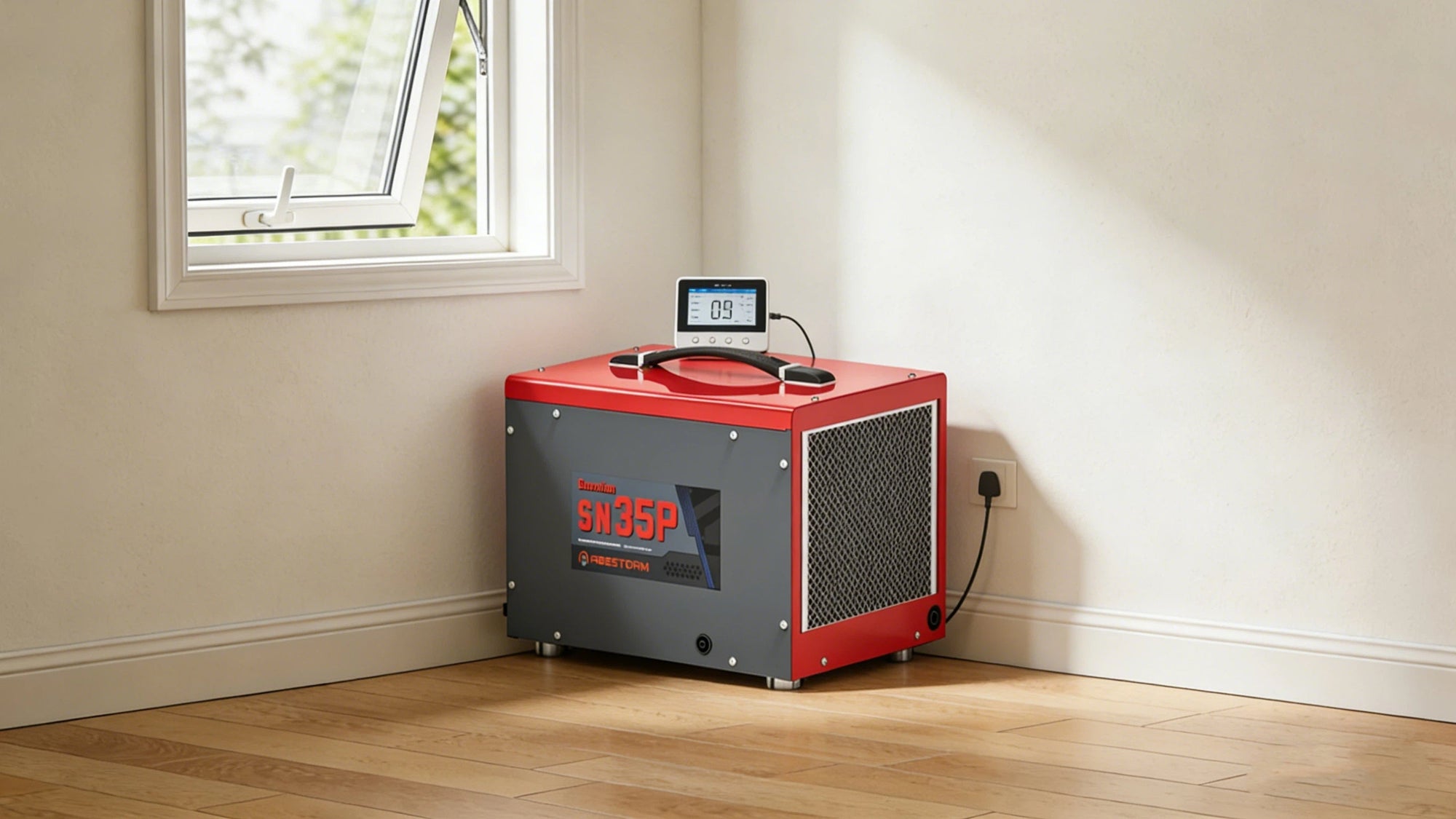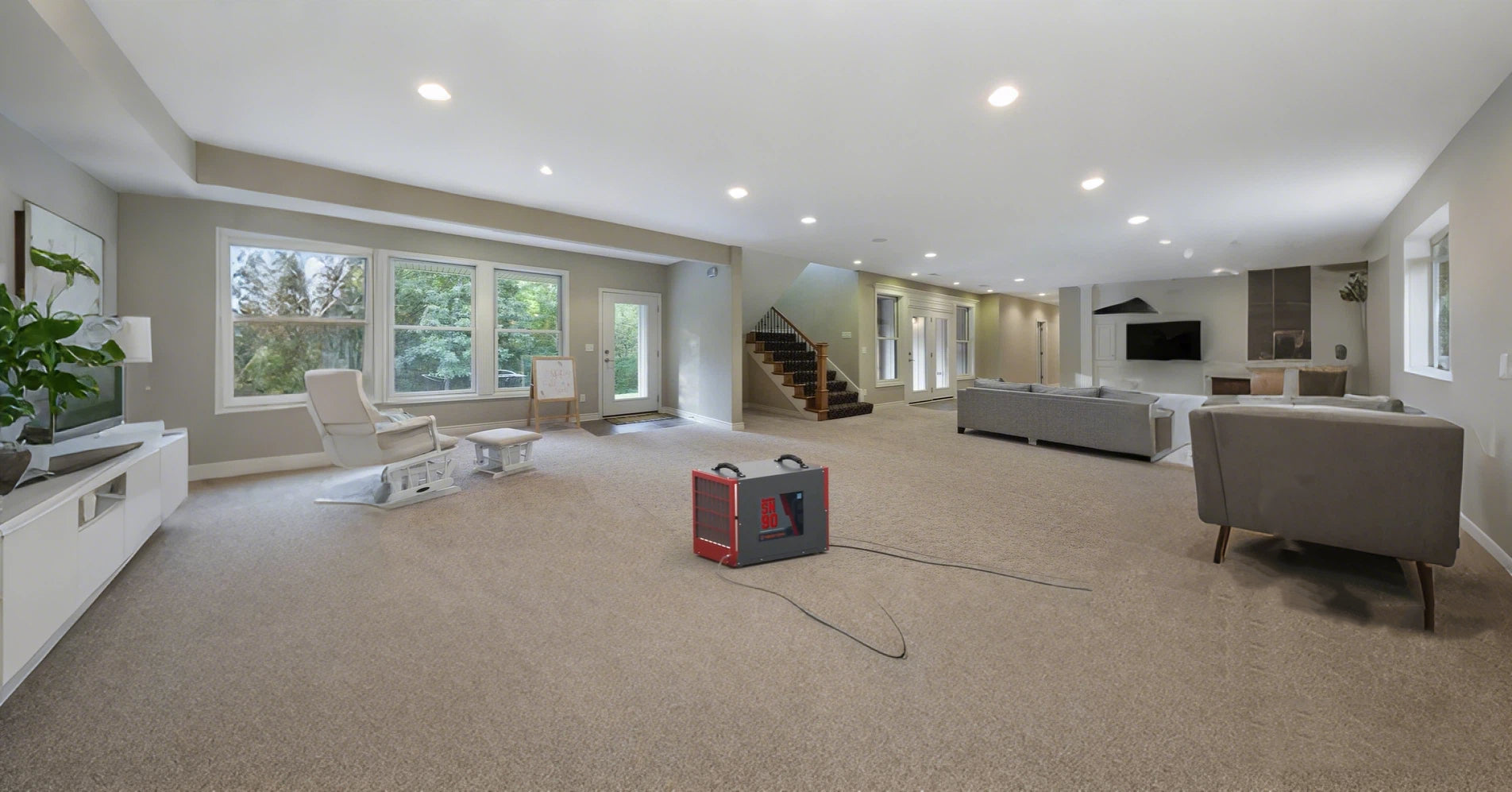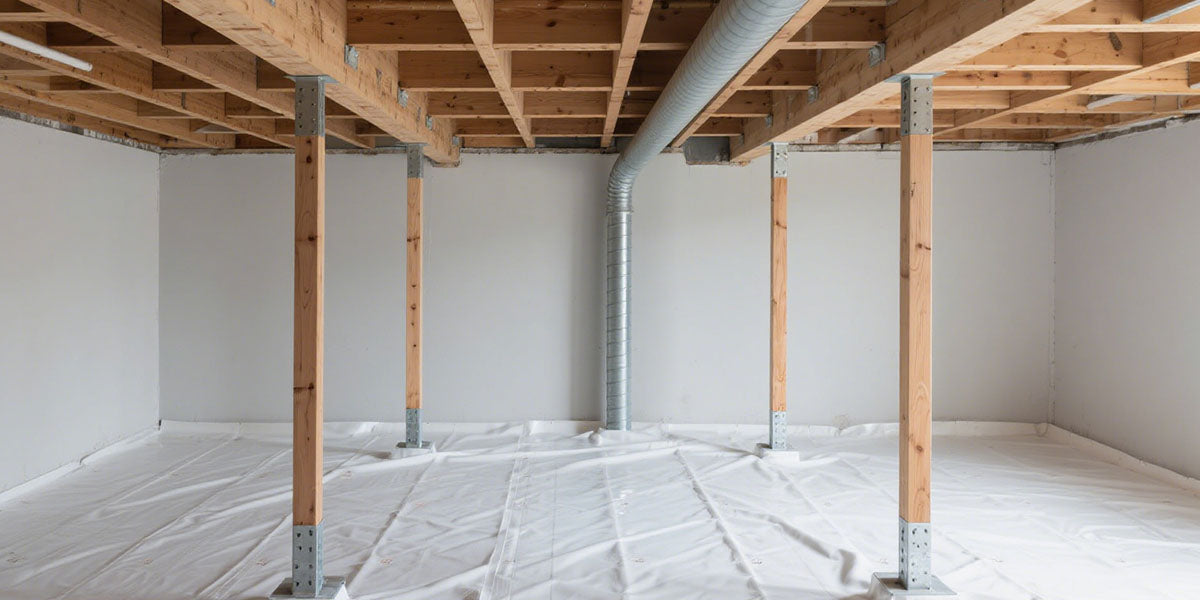Proper ventilation is important for maintaining indoor air quality, preventing mold, and improving health. For this, the ventilation fan works best, but what about the right size? Whether you are remodeling your bathroom or upgrading your kitchen range hood, installing undersized or oversized fans leads to many problems.
If you are wondering what size ventilation fan do I need, this guide helps you make an informed, cost-effective decision that pays off for years to come.
What Is CFM in Ventilation Fans?
CFM stands for Cubic Feet per Minute and is the standard unit used to measure how much air a fan can move per minute, and selecting the right CFM ensures efficient ventilation. It tells you how many cubic feet of air the fan can move in one minute (CFM), which is essential when comparing different types of vent fans like ceiling-mounted, inline, or wall-mounted models.
If the CFM is too low, the vent fan won't ventilate properly, leading to mold growth, and if the CFM is too high, it can result in unnecessary operating costs and a noisy environment. To calculate the right CFM for vent fans, here is the formula
CFM = (Room Volume × ACH) ÷ 60
Where:
● Room Volume = Length × Width × Height (in feet)
● ACH = Air Changes per Hour (e.g., 8 for bathrooms, 15–20 for kitchens)
● 60 = Number of minutes in an hour (to convert hourly air volume to per minute)
How to Calculate the Correct Ventilation Fan Size?

For optimal air circulation, you have to follow these steps to calculate the ideal ventilation fan size according to the room dimensions:
Step 1: Calculate Room Volume
For this, calculate: Room Volume (cubic feet) = Length × Width × Height
If a bathroom measuring 10 ft x 8 ft with an 8 ft ceiling, it will be: Volume = 10 × 8 × 8 = 640 cubic feet
Step 2: Determine Required Air Changes (CFM)
The Home Ventilating Institute (HVI) recommends at least 8 air changes per hour for bathrooms. Convert that to CFM with this formula:
Required CFM = (Room Volume × 8) ÷ 60
Using the above example: CFM = (640 × 8) ÷ 60 ≈ 85 CFM
Step 3: Add CFM Based on Bathroom Fixtures
For bathrooms over 100 sq. ft, consider additional CFM for each fixture:
|
Fixture |
Additional CFM |
|
Toilet |
+50 CFM |
|
Shower |
+50 CFM |
|
Bathtub |
+50 CFM |
|
Jetted Tub |
+100 CFM |
If you are having a large bathroom with a toilet, shower, and jetted tub:
Total CFM = Base CFM + 50 + 50 + 100 = Base + 200 CFM
Get the best ventilation fans from Abestorm, and their team is cooperative enough to explain to you the ventilation fan size according to your space.
Bathroom Ventilation Fan Sizing Guide
If you're still unsure, check out our guide to choosing the best bathroom ventiliation fans for your specific space and needs. Here’s a quick reference to help you size your bathroom fan correctly, ensuring optimal ventilation and moisture control:
|
Bathroom Size (sq. ft.) |
Recommended CFM |
|
Up to 50 |
50 CFM |
|
51–100 |
1 CFM per sq. ft. |
|
Over 100 |
Add CFM based on fixtures |
For ceilings taller than 8 feet, adjust room volume using the actual ceiling height in your calculation.
Kitchen Range Hood Ventilation Requirements
Kitchen fans (range hoods) are necessary to remove smoke, grease, steam, and cooking odors. Their sizing depends on stove type and cooking habits. General CFM guidelines include:
|
Cooktop Type |
Recommended CFM per Linear Foot |
|
Electric Stove |
100 CFM |
|
Gas Stove |
150 CFM |
Here is how to size a kitchen range hood: Suppose you have a 30-inch (2.5-foot) gas cooktop, then the required CFM will be: 2.5 × 150 = 375 CFM
When to Increase CFM?
● Frequent high-heat cooking, like wok use, frying.
● Long duct runs or multiple bends
● Undersized ducts (match duct diameter to fan output
Tip: Always vent kitchen range hoods outside for maximum efficiency.
Ventilation Fan Noise: What Are Sones?
Ventilation fan noise is measured in sones, where a lower rating means quieter operation.
|
Sones Rating |
Noise Level |
|
<1.0 |
Very quiet (rustling leaves) |
|
1.0–2.0 |
Quiet (like a fridge) |
|
2.0–3.0 |
Moderate (office background) |
|
>3.0 |
Loud (like TV or conversation) |
For bathrooms, opt for fans ≤1.0 sones for a peaceful ambiance.
Factors That Affect Ventilation Fan Performance Beyond Room Size
Ventilation needs also vary depending on the space being ventilated. For example, areas like attics or basements may require crawlspace ventilation fans to manage moisture and airflow effectively.
Choosing the right CFM is not enough; knowing other elements are also important because they also reduce a fan’s effectiveness:
Ductwork Resistance
Each 10 ft of 4" duct adds 0.1–0.3 inches of static pressure (SP); elbows, caps, and filters add up to 0.15 SP each.
Solution: If the duct run exceeds 20 ft, either: Upgrade to 6" ducting, increase CFM by 20% to compensate
Static Pressure (SP)
SP is the resistance air faces as it moves through the system.
● Bathroom fans handle 0.1–0.4 inches w.g.
● A 300 CFM fan at 0.5 SP may only deliver 210 CFM.
● Always check the fan’s performance curve at your expected SP.
Sone Rating
Noise levels matter especially in quiet areas like bedrooms or home offices.
● 1 sone = Quiet bathroom fans with a low sone rating are ideal.
● 3 sones = normal conversation
● ENERGY STAR sets limits: ≤90 CFM fans: Max 2.0 sones and 201–500 CFM fans: Max 3.0 sones
Local Climate
In hot, humid states like Florida, Louisiana, you’ll need 20% more CFM to combat heavy moisture. Dry zones like Arizona may need less.
Ceiling Height
For ceilings over 8 ft, apply this adjustment: Adjusted CFM = Base CFM × (Ceiling Height ÷ 8)
Example: 100 CFM × (12 ÷ 8) = 150 CFM
Final Checklist Before You Buy
Before purchasing your exhaust fan, verify these essentials:
● Calculated CFM using room volume, fixture count, and ceiling height
● Duct size & length are compatible with the desired CFM.
● Some ratings are suitable for the room type (≤1.0 for quiet areas).
● Check wiring and circuit requirements, like heat lamps often need a separate circuit.
Final Thoughts: Get the Right Airflow, the First Time
Proper ventilation fan sizing is important for the protection of your health, home, and investment. A well-sized 110 CFM fan, installed with proper ducting, minimal bends, and correct placement, can perform better than a 200 CFM fan that's poorly installed.
So, take 15 minutes to measure your space, crunch the numbers, and evaluate ductwork constraints. I hope your query: What size ventilation fan do I need? Will be solved!









Shop For Dehumidifier
Abestorm 170 PPD 2,100 Sq.Ft Commercial Dehumidifier with Pump and Drain Hose | Hurricane 800
Abestorm 180 PPD 2,300 Sq.Ft Commercial Dehumidifier with Pump and Drain Hose | Hurricane LGR85
Abestorm 264 PPD 3,000 Sq.Ft Commercial Dehumidifier with Pump and Drain Hose | Hurricane 125P
Abestorm 180 PPD 2,300 Sq.Ft Commercial Dehumidifier with Pump and Drain Hose | Hurricane 850